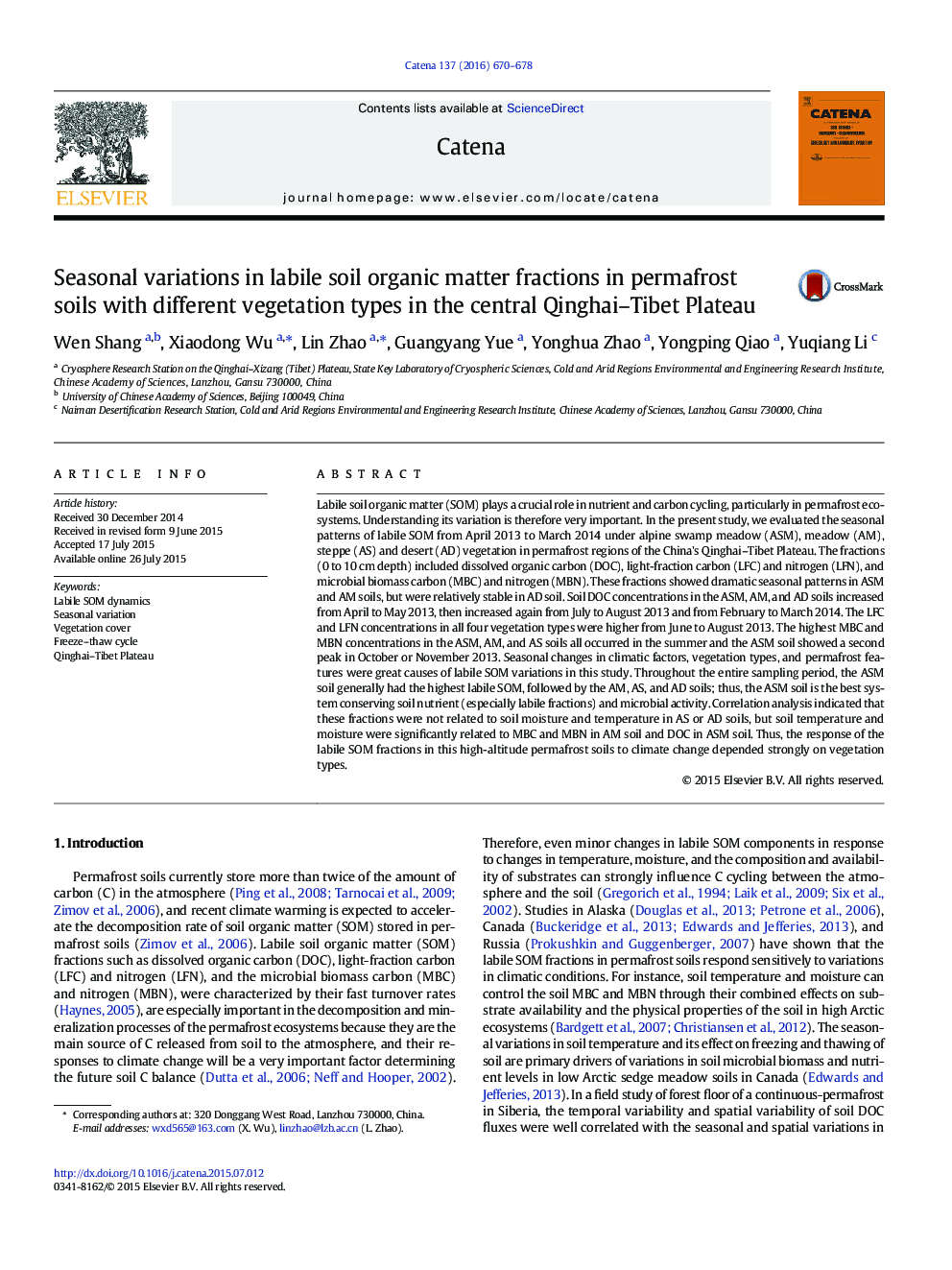| Article ID | Journal | Published Year | Pages | File Type |
|---|---|---|---|---|
| 6408044 | CATENA | 2016 | 9 Pages |
â¢Seasonal patterns of labile soil organic matter were analyzed in permafrost region.â¢Labile soil organic matter showed dramatic seasonal patterns in ASM and AM soils.â¢Labile soil organic matter declined with vegetation cover decreased.â¢Climatic factors and vegetation type affect variances in labile soil organic matter.
Labile soil organic matter (SOM) plays a crucial role in nutrient and carbon cycling, particularly in permafrost ecosystems. Understanding its variation is therefore very important. In the present study, we evaluated the seasonal patterns of labile SOM from April 2013 to March 2014 under alpine swamp meadow (ASM), meadow (AM), steppe (AS) and desert (AD) vegetation in permafrost regions of the China's Qinghai-Tibet Plateau. The fractions (0 to 10Â cm depth) included dissolved organic carbon (DOC), light-fraction carbon (LFC) and nitrogen (LFN), and microbial biomass carbon (MBC) and nitrogen (MBN). These fractions showed dramatic seasonal patterns in ASM and AM soils, but were relatively stable in AD soil. Soil DOC concentrations in the ASM, AM, and AD soils increased from April to May 2013, then increased again from July to August 2013 and from February to March 2014. The LFC and LFN concentrations in all four vegetation types were higher from June to August 2013. The highest MBC and MBN concentrations in the ASM, AM, and AS soils all occurred in the summer and the ASM soil showed a second peak in October or November 2013. Seasonal changes in climatic factors, vegetation types, and permafrost features were great causes of labile SOM variations in this study. Throughout the entire sampling period, the ASM soil generally had the highest labile SOM, followed by the AM, AS, and AD soils; thus, the ASM soil is the best system conserving soil nutrient (especially labile fractions) and microbial activity. Correlation analysis indicated that these fractions were not related to soil moisture and temperature in AS or AD soils, but soil temperature and moisture were significantly related to MBC and MBN in AM soil and DOC in ASM soil. Thus, the response of the labile SOM fractions in this high-altitude permafrost soils to climate change depended strongly on vegetation types.
